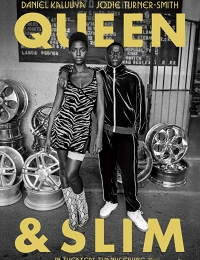The discussion can sometimes seem sterile insofar as everyone remains trapped in their first convictions and the different opinions are expressed without really changing. We will now suggest one or the other path that allows, in terms of cinema, a certain progression in collective reflection. As will be seen, these approaches, while not being entirely original, nevertheless break with the spontaneous perception of most spectators. From https://new-fmovies.pro/ this is essential.

The judgment of fact and value judgment
When faced with a film, we spontaneously make value judgments on the characters, the story told the actors’ performance, the filmmaker’s words, film aesthetics, realism or the lack of realism in fiction. Very generally, we pronounce such judgments as if they were objective and should, therefore, be recognized by this fact by all: when I say for example that “this film is bad”, there is no restriction in my remarks while its scope would be much less if I only said that “I think or I think this film is bad”.
Any value judgment rests on a necessarily subjective basis
The beautiful, the ugly, the good, the bad, the just, the unjust, cannot be defined objectively and vary widely, as we know, depending on individuals, cultures, eras, societies, civilizations. This does not, however, mean that any discussion or reasoning is impossible about value judgments: if individuals share the same criteria or the same scales of assessment, they can then analyze the “level” of the object in question – a work of art, behavior in relation to the scale envisaged. Thus, originality is a criterion often retained in cinematographic appreciation, and it is, therefore, possible to discuss and argue to decide whether a film like Jean-Luc Godard’s Pierrot le fou (1965) is more original than the Great Vadrouille by Gérard Oury (1966).
The Wind that Shakes the Barley by Ken Loach
But, in their judgments, the spectators refer to many other criteria, even if it is most often in an implicit mode: thus, the human complexity of the characters often makes it possible to positively evaluate certain achievements, and most of the critics recognize for example that the films of Clint Eastwood’s maturity at least since Honkytonk Man directed in 1983 are distinguished by an ambivalence and a density of characters that were not expected from the actor who interpreted the ‘Inspector Harry (Don Siegel, 1972), Morality and politics are also commonly used to judge films, and the evaluation of the achievements of a filmmaker like Ken Loach, whose political engagement on the left if not on the far left is well known, cannot be done. the impasse on his bias denouncing liberal policy in Great Britain some applauding this denunciation, others finding it simplistic or demagogic, finally, “realism” or the absence of realism is a criterion very frequently used to judge a film, in particular since André Bazin defined cinema as being or should be? Essentially realistic art and most of the spectators who appreciate the films of the Dardenne brothers, for example, defend the deeply realistic dimension of their productions.
Assessment criteria and scales
The use of such criteria or scales of evaluation nevertheless poses certain problems. Thus, a criterion like “realism” can be understood in an extremely diverse way, and it is very difficult to define which are the precise features of a film which possibly justify this “realistic” character; moreover, as we generally have different conceptions of “reality”, what will appear to some as authentic or truthful may seem to others conventional and artificial.

